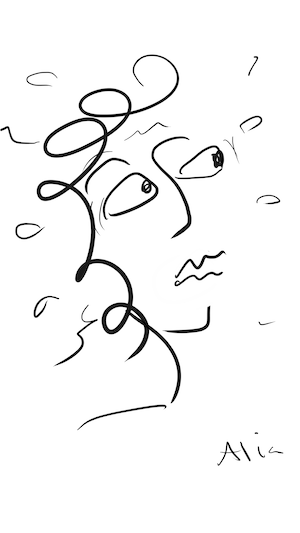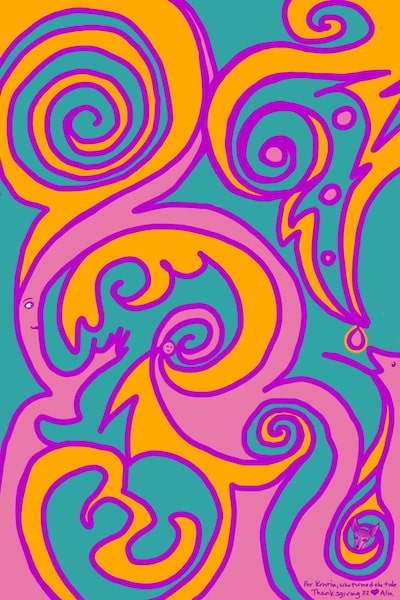Well, maybe it’s a tie with improvisation, but see what you think ; )
A friend of mine had a terrible disaster fall upon her. Several, actually. And she had an event to do. She could barely function, but she hosted the event, and she did her show. We, her friends, sat at the tables and sent her so much love. Despite it all, she was beautiful and courageous.
Just as she left the stage, a visiting dancer told her how much better she would look if she brought her shoulders down. Um, yeah. She’d look a lot better if the world hadn’t just taken a big dump on her head, too. But this dancer just had to say her piece. CRASH. Good-bye, all the joy of having done the hard thing.
It’s happened to all of us.
“Your dance would be so much better if you <insert some opinion here>.” It’s not whether they are right or not. It’s the time. And the place. And the agenda. And why is so much importance placed on niggling details–yet the content of the dance is never even mentioned?
Who doesn’t live in in fear of the Dance Police? Sometimes it seems like anyone at any time feels entitled to tell us about our art. And not in a good way. Not to mention the sense of doom we have when we go to watch the video of our latest dance. It’s tough when we have so many things to worry about.
People generally never learn how to do a proper critique. A proper critique includes productive feedback on strengths and weaknesses. It is kind, honest, and empowering. It is delivered neutrally. It listens to the artist’s vision and helps them accomplish what they want, to say what they want to say.
But when do we get that? Even folks who went to art school (any of the arts), are often critiqued viciously, on purpose, to break them down or make them cry or whatever. And how many of us grew up in homes where everyone pointed out all our flaws? Yeah, me too. So when I started working as a writing teacher, I learned how to critique my students so that their writing actually got better–and they felt good about it.
Poor critique causes unnecessary pain. Productive critique brings encouragement, curiosity, and inspiration. Being subject to anyone’s mean-spirited, cutting critique is terrifying. Learning how to critique well, how to ask for what we need–this is how we tame it.
I see a lot of problems with getting good feedback.
Lots of dancers frustrated because all they got was empty saccharine compliments or snotty remarks about their hair. Or complaints that any useful comments are not sisterly–a notion that quality doesn’t matter, it’s all about sisterhood. Teachers frustrated by trying to help dancers improve, only to be met with hurt feelings and bitterness. Opinions are presented as facts. Dancers feel shamed. A mess, all around.
So I made a class, to teach what I had learned. It’s called…
Focus on the Feeling: How to Get and Give Great Critique
The premise of the course is that Oriental dance has some specific cultural ideals, and these come first. The feeling in the moment, sharing joy, playfulness, and so forth. If those aren’t happening, stop. Work on that. Once those elements are in place, then we may proceed to other layers of the dance.
I collected five models I have found useful into a cohesive whole, with an arc that begins with calling out the good and concludes with the use of rubrics to help us note what’s important and to really see what is there.
Every piece of it is carefully designed to shine light on our art. Not only that, but it teaches dancers how to do productive self-critique (instead of hating on all our perceived flaws ; ). So it’s useful for dancers and students who want to have more nuanced approach to their own dance, and for teachers who want to help their students improve. It’s a win-win!
I feel so strongly about useful critique that I’ve made the early price ridiculously cheap. I spend a good half hour per week on each person on the course. Even if I value my time at $50/hr (which is cheap for a college instructor with over 45 years of experience in the dance), that’s still $300 of my time over the five weeks.
The early price won’t last long. It goes away when 10 seats are filled or Sept 22, whichever comes first. But the benefits of the class? Those last forever.
Imagine feeling good about your dance.
Imagine enjoying video of yourself. Imagine being able to help your friends or students improve–and having them feel good about it. All this can be yours.
I invite you to check it out.
Focus on the Feeling: How to Get and Give Great Critique
Love,
Alia
PS I am selling some Geisha Moth and Melodia dancewear. Have a look!







No comment yet, add your voice below!